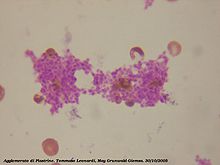This study shows that DHT treatment increased NF-kB activity by 45% when compared to vehicle treatment and co-treatment with parthenolide inhibited DHT-induced NF-kB activation (
Figure 4B).
http://pubmedcentralcanada.ca/pmcc/articles/PMC3074296/
Life Extension Science DHT promotes atherosclerosis in men via NFKB but not so much in women
Dihydrotestosterone Promotes VCAM-1 Expression in Male Human Endothelial
Cells via a NF-{kappa}B Dependent Pathway.
http://www.varioustopics.com/life-extension/758175-dht-promotes-atherosclerosis-in-men-via-nfkb-but-not-so-much-in-women.html
NF-κB (nuclear factor kappa-light-chain-enhancer of activated B cells) is a protein complex that controls the transcription of
DNA.
NF-kappa B is the "master switch" of inflammation and is gene related..
Mechanism of hypoxia-induced NF-kappaB.
Culver C,
Sundqvist A,
Mudie S,
Melvin A,
Xirodimas D,
Rocha S.
Source
College of Life Sciences, Wellcome Trust Centre for Gene Regulation and Expression, MSI/WTB/JBC Complex, University of Dundee, Dundee, Scotland.
Abstract
NF-κB activation is a critical component in the transcriptional response to hypoxia. However, the underlying mechanisms that control its activity under these conditions are unknown. Here we report that under hypoxic conditions, IκB kinase (IKK) activity is induced through a calcium/calmodulin-dependent kinase 2 (CaMK2)-dependent pathway distinct from that for other common inducers of NF-κB. This process still requires IKK and the IKK kinase TAK1, like that for inflammatory inducers of NF-κB, but the TAK1-associated proteins TAB1 and TAB2 are not essential. IKK complex activation following hypoxia requires Ubc13 but not the recently identified LUBAC (linear ubiquitin chain assembly complex) ubiquitin conjugation system. In contrast to the action of other NF-κB inducers, IKK-mediated phosphorylation of IκBα does not result in its degradation. We show that this results from IκBα sumoylation by Sumo-2/3 on critical lysine residues, normally required for K-48-linked polyubiquitination. Furthermore, inhibition of specific Sumo proteases is sufficient to release RelA from IκBα and activate NF-κB target genes. These results define a novel pathway regulating NF-κB activation, important to its physiological role in human health and disease.
The role of NF-kappaB in hypoxia-induced gene expression.
Taylor CT,
Cummins EP.
Source
UCD Conway Institute, School of Medicine and Medical Science, College of Life Science, University College Dublin, Belfield, Dublin, Ireland.
cormac.taylor@ucd.ie
Abstract
Hypoxia is a common physiologic and pathophysiologic stimulus that activates the expression of genes through oxygen-sensitive transcription factors including the hypoxia-inducible factor (HIF) and nuclear factor-kappaB (NF-kappaB). Hypoxia-dependent gene expression can have important physiologic or pathophysiologic consequences for an organism, depending upon the cause of the hypoxic insult. Consequently, this pathway represents an attractive therapeutic target in a number of disease states. While the mechanism linking hypoxia to the activation of HIF has been extensively studied, our understanding of how hypoxia activates NF-kappaB is limited.
Recent studies have demonstrated that similar oxygen-sensing mechanisms are employed in conferring oxygen sensitivity to both HIF and NF-kappaB-dependent gene expression. Furthermore, there is an extensive degree of cross-talk occurring between NF-kappaB and HIF. Investigations into mechanisms of hypoxic activation of HIF and NF-kappaB and how these signaling pathways interact will uncover new therapeutic modalities in a diverse range of disease states where hypoxia is a feature of the microenvironment including cancer, vascular disease, and chronic inflammation.
Nuclear Factor Kappa B
NFkB is the "big cheese" cell-signaling molecule for inflammation; its activationinduces the expression of COX-2, which leads to tissue inflammation. "Intriguingly,the expression of the COX-2-encoding gene, believed to be responsible for themassive production of prostaglandins at inflammatory sites, is transcriptionallyregulated by NFkB."[SUP]2
[/SUP]NFkB resides in the cytoplasm of the cell and is bound to its inhibitor. Injurious and inflammatory stimuli, such as free radicals, release NFkB from the inhibitor. NFkB moves into the nucleus and activates the genes responsible for expressing COX-2


